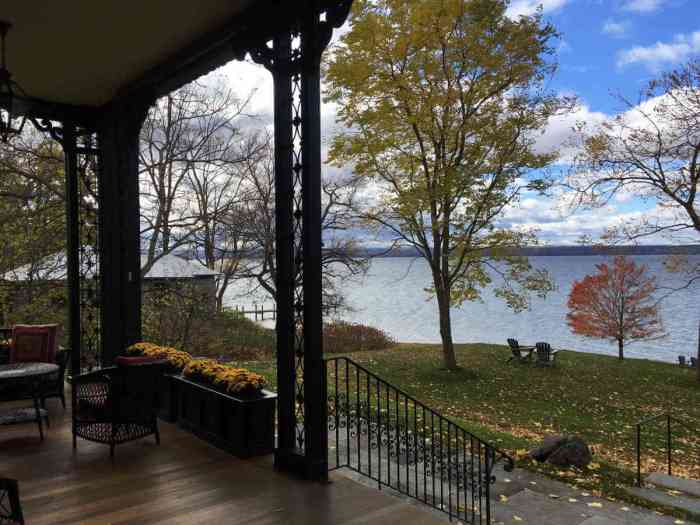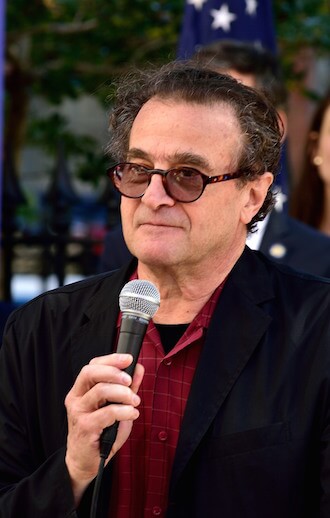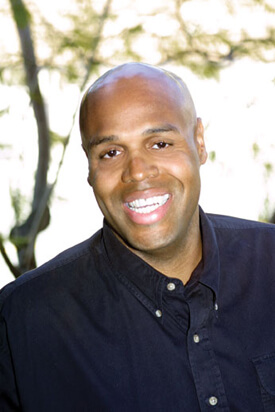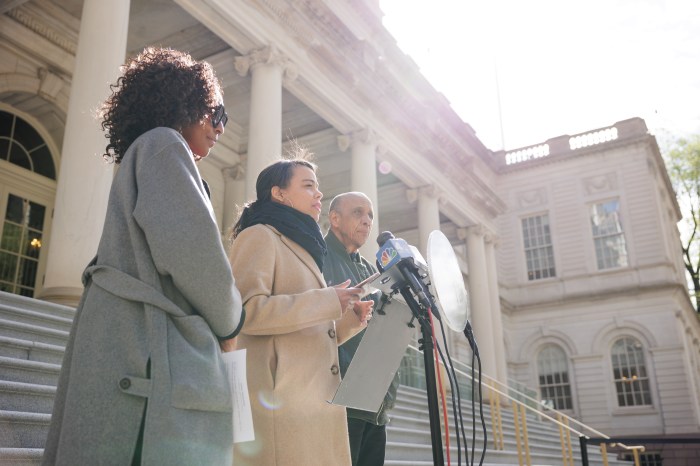The National Susan B. Anthony Museum and House in Rochester, where the pioneering suffragette was arrested for trying to cast a vote for president in 1872. | DARREN MCGEE/ EMPIRE STATE DEVELOPMENT/ NYS DIVISION OF TOURISM
Most LGBTQ New Yorkers know that our state was the birthplace of the modern gay rights movement at Stonewall. Some know that the women’s rights movement was born here as well. Still others are aware of the state’s prominent role in bringing an end to slavery.
Particularly this year as New York celebrates the 100th anniversary of women’s suffrage in this state, it’s a great time to explore that proud legacy of furthering freedom and make it part of a New York State vacation.
On July 19, 1848, 300 women and 48 men packed into the Wesleyan Chapel in Seneca Falls to declare to the world the radical notion that all men and women are created equal. In 1872, Susan B. Anthony was arrested at her home in Rochester for simply attempting to vote for president. And in 1917, New York became one of the first states to grant women the right to vote, with the nation following suit three years later.
Exploring New York State’s legacy in advancing freedom an anchor for a great getaway
Today, visitors can visit the sites so central to that struggle, as well as those connected to other trailblazing women. The Women’s Rights National Historical Park in Seneca Falls includes the home of Elizabeth Cady Stanton and the Wesleyan Chapel, where the First Women’s Rights Convention was held. Also in town, the National Women’s Hall of Fame features the stories of more than 200 distinguished women inducted there since 1969.
Just an hour away in Fayetteville, the Matilda Joslyn Gage House was a center for suffrage work, a stop on the Underground Railroad, and home to Gage’s son-in-law, L. Frank Baum, the author of “The Wizard of Oz.” Not far away in Rochester, the National Susan B. Anthony Museum and House is where the pioneering leader for women’s rights lived, wrote, and organized. Still further west, the Lucille Ball Desi Arnaz Museum in Lucy’s hometown of Jamestown shows off her legacy as a one of the first female leaders in television production.
Outside the National Susan B. Anthony Museum and House in Rochester. | DARREN MCGEE/ EMPIRE STATE DEVELOPMENT/ NYS DIVISION OF TOURISM
Down in the Hudson Valley, Edna St. Vincent Millay’s Steepletop presents the history of the Pulitzer Prize-winning poet who came to represent the liberated women of the Jazz Age. In nearby Hyde Park is the only national historic site dedicated to a first lady — Eleanor Roosevelt — featuring her charming Val-kill home. On Staten Island, the Alice Austen House Museum features the story and works of one of America’s earliest and most prolific female photographers, who enjoyed a 50-year relationship with her companion Gertrude Tate.
New York’s history is equally important when it comes to achieving equality for African Americans. New York was where brave “conductors” on the Underground Railroad like Harriet Tubman secured safe passage for slaves escaping north. New York abolitionists like Frederick Douglass dedicated their lives to creating a freer America. New York State was also home to the Niagara Movement, a precursor to the 1909 founding of the NAACP.
The Harriet Tubman National Historical Park in Central New York’s Auburn is where Tubman lived and worked for social betterment. Nearby in Auburn, the Seward House Museum tells the story of Abraham Lincoln’s secretary of state, who joined his wife in playing important roles in the anti-slavery and women’s rights movements. Not far away in Peterboro, the Gerrit Smith Estate National Historic Landmark chronicles the activities of one of the nation’s most powerful abolitionists who purchased the freedom of hundreds of slaves.
The John Brown Farm State Historic Site in Lake Placid recalls the life and work of the famed and doomed abolitionist. | DARREN MCGEE/ EMPIRE STATE DEVELOPMENT/ NYS DIVISION OF TOURISM
In the Adirondacks, the John Brown Farm State Historic Site in Lake Placid is the home and grave of the ardent abolitionist who attacked Harpers Ferry to gain arms for a campaign to liberate slaves. The nearby North Star Underground Railroad Museum in Ausable Chasm explains the region’s importance in providing passage to Canada. Out west in Buffalo, Forest Lawn Cemetery is the final resting place for Shirley Chisholm, the first African-American women elected to Congress, and Mary Burnett Talbert, founder of the Niagara Movement.
In other areas of civil rights, New York was also a national leader. New York City has must-see historic LGBTQ sites like the Stonewall National Monument and the new NYC AIDS Memorial. Up in the Thousand Islands-Seaway region, the Safe Haven Holocaust Refugee Shelter Museum in Oswego tells of how President Franklin D. Roosevelt brought 1,000 refugees from Europe to the only shelter for Nazi Holocaust survivors in the US. Out west in the Chautauqua-Allegheny region, the Robert H. Jackson Center in Jamestown was home to the Supreme Court justice who was the chief US prosecutor at the post-war Nuremberg trials.
The Women’s Rights National Historic Park in Seneca Falls. | KENNETH C. ZIRKEL/ EMPIRE STATE DEVELOPMENT/ NYS DIVISION OF TOURISM
We New Yorkers have much to be proud of when it comes to our heritage of fighting for justice. What a great way to spend some of your vacation this year — celebrating that legacy. A downloadable NYS Equal Rights Destinations Travel Guide and a list of historical equal rights events across the state are available at iloveny.com/equalrights to help you plan your trip.
Ross D. Levi is vice president of marketing initiatives at the Empire State Development/ NYS Division of Tourism, and coordinator of I LOVE NEW YORK LGBT.





































